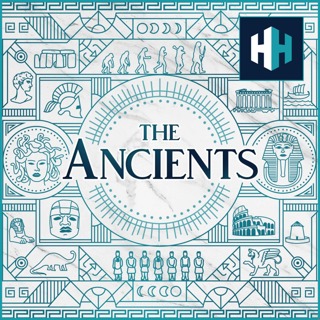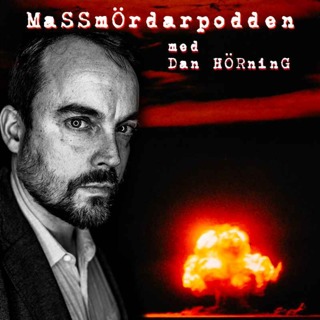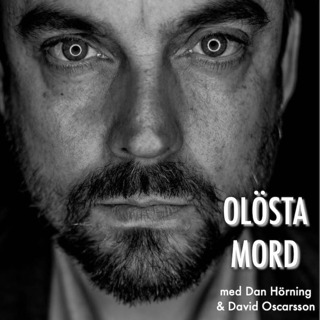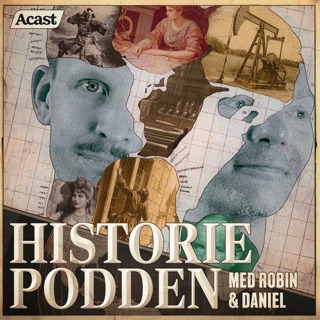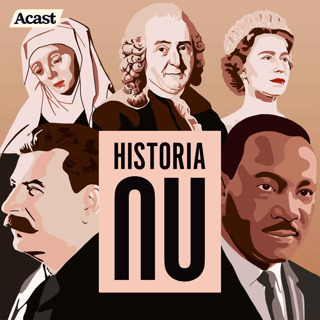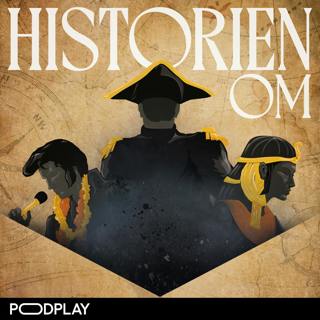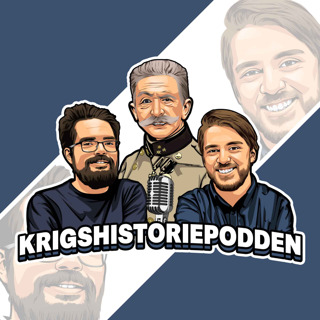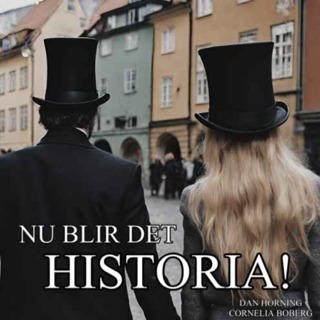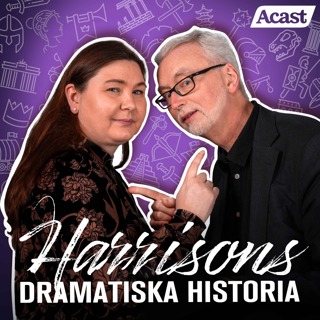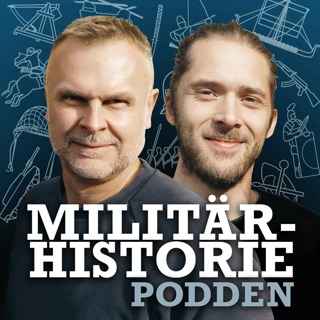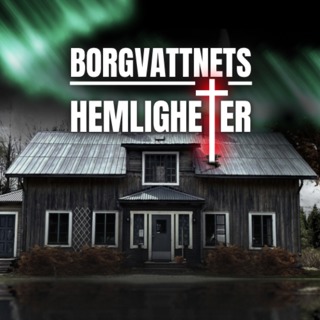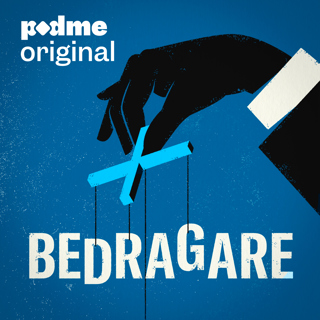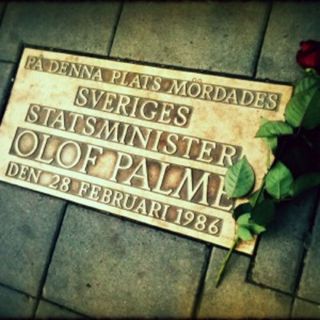
Besieging Masada
Dramatically placed on a plateau with drops of 400m to the east and 90m to the west, Masada translates from Hebrew as fortress. It became just that when Herod the Great built a magnificent palace complex upon it between 37 and 31 BC, the remains of which are in fantastic shape today. But the site isn’t only notable for its connection to the bible-famed King of Judaea. Masada was also the stronghold of some of the survivors of a Jewish revolt and, in response, the locus of a Roman siege in the early 70s AD. For this first of two parts, Tristan spoke to Jodi Magness from the University of North Carolina. Jodi co-directed the 1995 excavations of the Roman siege works at Masada, and in this episode she tells Tristan about the archaeological findings at the site, many of which are still visible to the untrained eye.Jodi is the author of 'Masada: From Jewish Revolt to Modern Myth'.Part 2, which will focus on the fall of Masada, the myths and the siege's legacy, will be released in the coming weeks. Hosted on Acast. See acast.com/privacy for more information.
7 Feb 202137min

Beasts of Battle: Indian War Elephants
The four components of the Ancient Indian battlefield: infantry, cavalry, chariots … and elephants. These magnificent creatures were dominant in conflicts to the east of India, in South-East Asia, but also to the west, in Greece and Africa. For this episode, Anirudh Kanisetti and Tristan discussed the role of Indian war elephants, their strengths, weaknesses and training; and what they tell us about Ancient India. Anirudh’s own podcasts, Yuddha, which is dedicated to Indian Military history, and Echoes of India, which embraces the whole of Indian history, can be found here: https://www.anirudhkanisetti.com/podcasts Hosted on Acast. See acast.com/privacy for more information.
4 Feb 202156min

Edges of Empire: Rome's Northernmost Town
Roughly two miles south of Hadrian’s Wall lie the remains of Roman Corbridge, the northernmost town of the Roman Empire. The site’s archaeology is unique. The remains highlight what was once a bustling town. As its centre was the high street. Covered walkways, street side shops and an ornate fountain are just a few of the structures that we know were present along this central road, now known as the Stanegate. Metres away, however, you have the remains of very different structures surviving. Military buildings, ‘mini forts’ that were slotted into Corbridge’s bustling town landscape, when the legionaries returned here in the 2nd century. Though not on Hadrian’s Wall itself, this ancient cosmopolitan town had strong economic connections with those manning this frontier. It is a must see site for anyone planning to visit Hadrian’s Wall.A few months back, I was fortunate enough to visit Corbridge and be shown around the site by English Heritage curator Dr Frances McIntosh. The full tour / documentary can be viewed on History Hit TV. Hadrian’s Wall: Settlement and Supply: https://access.historyhit.com/videos/settlement-and-supplyThe site of Corbridge Roman Town is owned by English Heritage https://www.english-heritage.org.uk/visit/places/corbridge-roman-town-hadrians-wall/ Hosted on Acast. See acast.com/privacy for more information.
31 Jan 202122min

Roman Military Tombstones: Uncovering the Unknown Warriors
From Northern Britain to the Near East, Roman tombstones have been uncovered on various far flung frontiers of the Roman Empire. Dedicated to those auxiliaries and legionaries that perished far from home, guarding a distant border of this ancient empire. These objects provide an extraordinary insight into the lives of these fallen soldiers and how they were honoured. But these memorials don’t just provide information about the tomb’s deceased occupant. They can tell us so much more. About variation in tombstone designs, about the larger military community stationed on that frontier and about the importance of memory for these soldiers. To talk through this astonishing topic, Tristan was delighted to be joined by Ewan Coopey, from Macquarie University in Sydney. A Roman tombstone fanatic, Ewan has done a lot of research into funerary monuments on Roman frontiers, particularly regarding those belonging to Legio VII, based in Dalmatia. Hosted on Acast. See acast.com/privacy for more information.
28 Jan 202139min

The Mystery of the Ninth Legion
The legions of Rome were the nucleus of Rome’s military might for centuries. From campaigning in northern Scotland to the Persian Gulf, these devastating battalions extended and cemented Roman power. Yet of these legions there was one whose end is shrouded in mystery: the Ninth Legion. So what might have happened to this legion? Joining me to talk through the theories surrounding the Ninth's disappearance is Dr Simon Elliott. Simon has recently written a book all about the Ninth's disappearance, and in this podcast he takes us through the various theories and evidence surrounding this mystery. Hosted on Acast. See acast.com/privacy for more information.
24 Jan 202139min

Edges of Empire: The Sasanian Frontiers
For centuries, arguably the greatest external threat the Roman Empire faced came from the East. From the Sasanian Persian Empire. With its nucleus situated in Iran, at its height the Sasanian Empire was one of antiquity’s most formidable kingdoms, controlling lands that stretched from the Hindu Kush to the River Euphrates. Like the Romans, the Sasanians had to deal with various potential threats. From the north, from the lands of the steppe east and west of the Caspian Sea, nomadic peoples such as the Huns would become renowned for descending on Roman and Sasanian territories and wreaking havoc. And so, on the edges of their empire, the Sasanians constructed frontiers of various forms. For military purposes, yes. But also for economic and political purposes as will be explained.In this podcast, we’re going to look at some of these Sasanian frontiers. From a dominating fort a ‘top an alpine gorge in the Caucusus to a barrier that makes Hadrian’s Wall pale in comparison. To talk through this incredible topic, I was delighted to be joined by Dr Eve MacDonald from the University of Cardiff. Alongside her research on the Sasanian Empire and its frontiers, Eve has also done work surrounding the ancient history of Carthage and of North Africa. She is the author of ‘Hannibal: A Hellenistic Life’. Hosted on Acast. See acast.com/privacy for more information.
21 Jan 202144min

Indonesian Cave Art: A Dramatic New Discovery
It’s a paradox for the ages, breaking news about people who lived and died thousands of years ago. This discovery is no different, because Adam Brumm and his team in Sulawesi have released their discovery of the oldest known figurative art made by modern humans. And the oldest known cave art depicting the animal kingdom. The paintings on the Indonesian island are over 45,500 years old, and feature three pigs alongside the stencilled outlines of the hands of their prehistoric painter (perhaps). Listen as Adam tells Tristan about his research on this beautiful island, how the pigs were discovered and what they can tell us about the first humans to arrive in Southeast Asia. Hosted on Acast. See acast.com/privacy for more information.
17 Jan 202143min

Tomyris: A Warrior Queen's Revenge
Her legend afforded her a place alongside Eve, Cleopatra and Venus, to name just a few of the famous women whose biographies were collected by Giovanni Boccaccio in 1361-2. Though not a household name as the others may be, Tomyris’ story contains all of the hallmarks of an epic. Tomyris was Queen of the Massagetae people, from present day Central Asia, in the 6th century BC. She is remembered in Herodotus’ first book for her vengeful challenge to the bloodthirsty Cyrus the Great. To talk about Tomyris, Queen and commander, Tristan was joined by Christian Djurslev of Aarhus University. Hosted on Acast. See acast.com/privacy for more information.
14 Jan 202140min
